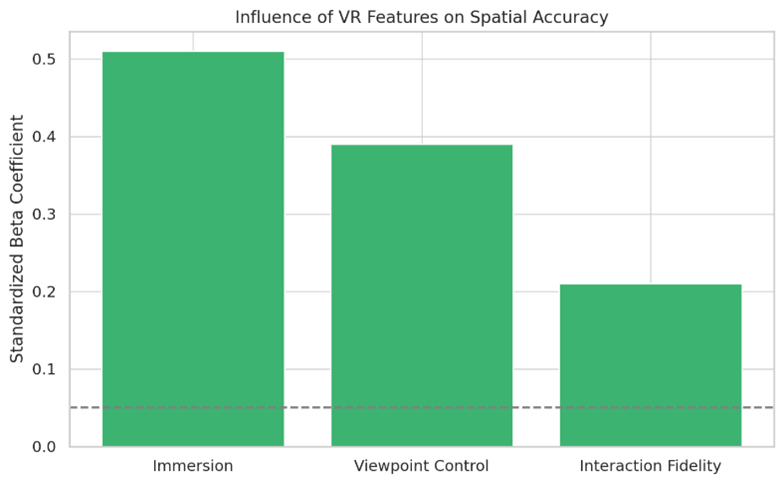Enhancing Spatial Accuracy Through Immersive Virtual Reality: A Comparative Study of Desktop and Head-Mounted Display Environments
Keywords:
Spatial Cognition, Immersive VR, Non-Immersive VR, Head-Mounted Display (HMD), Spatial Accuracy, Spatial Design Consistency Index (SDCI), Viewpoint ControlAbstract
Spatial cognition is fundamental in STEM domains and professional tasks requiring mental manipulation of three-dimensional structures. With the growing integration of Virtual Reality (VR) technologies in education and training, understanding how the modality of VR—immersive (Head-Mounted Display, HMD) versus non-immersive (desktop)—impacts spatial performance is crucial. This study investigates the effects of immersion level, viewpoint control, and exposure sequence on spatial accuracy and consistency. A total of 60 participants completed spatial design tasks in both immersive and desktop VR environments, with performance metrics including spatial deviation, self-reported spatial awareness, and a novel Spatial Design Consistency Index (SDCI). Results revealed that participants in the immersive VR condition demonstrated significantly higher spatial accuracy, reduced frequency of spatial outliers, and greater design consistency. Regression analysis identified immersion level and dynamic viewpoint control as significant predictors of performance. Furthermore, starting with immersive VR before transitioning to desktop VR led to better overall retention and accuracy. These findings align with existing literature highlighting the cognitive advantages of immersive VR and suggest its preferential integration into spatially demanding educational and design contexts.


